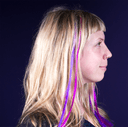
Brand Guidelines in the Agent Era
October 10, 2025
Once upon a time, I’m told that companies created perfect-bound printed brand guidelines.
Then came another era where a pdf was all you needed. A microsite could be nice, but in the end that humble document could be passed around, or printed out, or linked to online, and it would communicate with all those who needed to know the details on how your brand was to be represented - printers, clients, partners, agencies, freelancers.
What happens when one of the “need to know” is agentic ai?
Brand designers delight in defining our perfect typescale. Like a fingerprint, the emphasis on the headline, the size of the body copy, and the interplay of the typefaces help define the look and feel of your brand. We lovingly reflect it in our Brand Guidelines. The more technical designer (or their Front End compatriots) carry it over to the CSS.
But the agent must also know how and when to use it – like every time. Colors, icons, spacing…all that and more can (and must) be defined for the agent.
Enter Augment Guidelines.
Guidelines are a text file kept in the root of your repo that specifies what rules the agent should follow in plain text. Read more about guidelines

Guidelines
The LLM generating your code is opinionated based on the data it was trained upon. By relying on libraries like ShadCN, Radix, and Tailwind, the LLM can quickly generate reasonable results for the 0-1 crowd. But in a professional design context, we bring our own opinions and we crave non-generic results.
While developers may use Augment Guidelines to state preferences like use pnpm, not npm, for designers, this is a place where we can be extremely specific about how closely the agent should adhere to our specifications.
As the solo designer on a lean and fast marketing team, I first became aware of the need for this document when I found myself repetitively cleaning up generated content. At first, I assumed a human might be making the decision, but I soon learned it was just the agent's output accepted by the non-discerning or fast moving.
Someone, whether a developer or marketer, would make a page that would not be using the styles that I had painstakingly defined in the stylesheet and in the Figma brand guidelines. Subsequently, I found myself going through and changing the generic tailwind classes and responsive choices to conform to my type styles. As we’re a new brand, it was thankfully an act of defining as well as modifying.
Any repetition is an opportunity for automation.
How can you get started?
1. Audit
Refer to your current brand guidelines, your site's style sheet, or visually review your existing site and see what’s resonating on your currently live webpages.
What are the core elements on any given page that are repeatable and ownable on your marketing site? What decisions make it feel yours?
If you have have been on previous design janitor missions, you’ll be aware of the most common style creep – the habits the agent has based on its training. You can replace those with specific gradient backgrounds, key line weight, corner rounding, and requests for reusable modules. Everything is fair game and can be added to the spec.
2. Generate a generic page
Start fresh and see what the agent would generate without any explicit prompting. This helps isolate what might have been a choice by a coworker. For instance, ask the agent to generate a page about its own features.

Generated
3. Catalog what you would change and start writing it in plain language sentences
The things you might change manually are generally the things that need to be specified for the robots.
Out of the box, the agent was grabbing random icons and colors.
Specifying an icon library, telling Auggie to use the design system colors in the stylesheet, as well as to prefer existing modules and use certain pre-defined gradient styles can bring a page to 70% with no manual text adjustment necessary.

Adjusted image
4. Create a file in the root of your site, and place each rule on its own line starting with a dash.
You can ask Augment to go back and adjust your generated page based on the contents of the file to see if it is specific enough to get the effect you’re trying to achieve, and continue adding until it feels good enough.
Will this get you 100% of the way to a sexy branded page? Maybe not. But keep tweaking, use it as a boiler plate to start from, and seed it in your repo so everything that other people generate is that much closer to the vision, and requires less scrubbing after the fact.
In a fast moving team, landing pages often need to be spun up within a day. By defining the rules for your agent beforehand, you can empower your teammates to generate on-brand marketing assets that move beyond a template.
